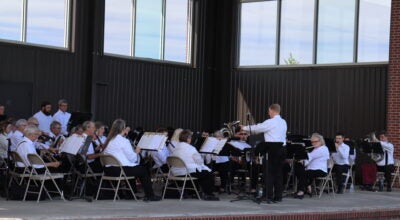Large advance of fall armyworms
Published 8:26 pm Sunday, October 3, 2021
By Bonnie Coblentz
MSU Extension Service
STARKVILLE, Miss. — Lawns, pastures and even winter food plots are at risk as an insect army advances across much of the state in higher than normal numbers.
Blake Layton, entomologist with the Mississippi State University Extension Service, said fall armyworms are the most damaging insect pests of bermudagrass hayfields and pastures. Armyworms attack golf courses and lawns, and they can defoliate an entire yard or field almost overnight.
“They are called fall armyworms because their numbers are highest in late summer and fall, and hay producers, cattlemen, turf managers and homeowners should expect to be dealing with this pest until frost,” Layton said.
Armyworms do not overwinter in the state, and they arrive each summer when moths migrate back into the state from the Caribbean, Mexico and areas of South America.
“Severity and distribution of fall armyworm infestations depends on when moths arrive, how many moths arrive, where in the state they arrive and weather conditions they experience once they get here,” Layton said. “In other words, it depends on how the wind blows.”
Fall armyworms are caterpillars that reach about 1½ inches long at maturity. Their body color varies depending on their stage of development and diet. Most are green or tan, but some can be dark brown to almost black, especially late in the year. The body is punctuated with dark spots.
“Four spots at the rear of the body form a square. On larger specimens, there is a distinct white inverted ‘Y’ shape on the head,” Layton said. “This ‘Y’ and the square of four spots on the rear are two of the best ways to identify fall armyworm caterpillars.”
When they metamorphose into moths, they are about ¾ inch long when resting with their wings folded. Moths are active at night and spend the day resting in foliage.
Eggs hatch in two to five days, and the newly emerged larvae begin feeding on the underside of leaf blades. Their feeding habits result in tiny, white “windowpanes” in the leaf blades or a white frizzing of the leaf tips.
“Experienced cattle producers watch for this white frosting or frizzing of the leaf tips as an early warning of fall armyworm infestation,” Layton said.
Damage caused by young caterpillars is easy to overlook because fall armyworms do 80% to 90% of their feeding in the last two to three days of their life.
“By the time they are ¾ to 1 inch long, fall armyworm caterpillars are leaf-eating machines that rapidly consume large amounts of leaf area,” Layton said. “Multiply the leaf consumption of a single caterpillar by the hundreds of thousands of caterpillars per acre that occur during heavy outbreaks, and it is easy to understand how fall armyworms can cause such rapid defoliation.”
Rocky Lemus, Extension forage specialist, said a good hay field can produce a few hundred dollars’ worth of hay per acre.
“Experienced cattlemen and hay producers learn to scout their fields every two to three days during periods when fall armyworms are a threat, and they have their spray equipment ready to go,” Lemus said.
There are treatment options for lawns, pastures, fields and golf courses, but the key is vigilance and quick action when the pest is detected.
Lemus said that in hayfields and pastures, pyrethroids used alone often fail to control the caterpillars, but they are more successful when combined with a growth regulator. A better option may be to switch to a nonpyrethroid product.
“Producers need to pay attention to grazing and haying restrictions associated with the product used to treat their pasture and hayfields,” Lemus said.
Well-established home lawns that are heavily damaged by fall armyworms will grow back, but homeowners can speed along the process with good watering, fertilizer and weed control. Both pyrethroids and nonpyrethroid products are available for lawns. Hose-end applicators work for small areas, while broadcast sprays work for large lawns.
“Granular treatments are not a good option for armyworms because the granules drop to the ground below the caterpillars,” Layton said. “Use a spray.”
Find specific recommendations on chemicals, application rates and timing in MSU Extension Publication 2727, “Fall Armyworms in Hayfields and Pastures,” or Publication 2331, “Control of Insect Pests in and around the Home Lawn.’





